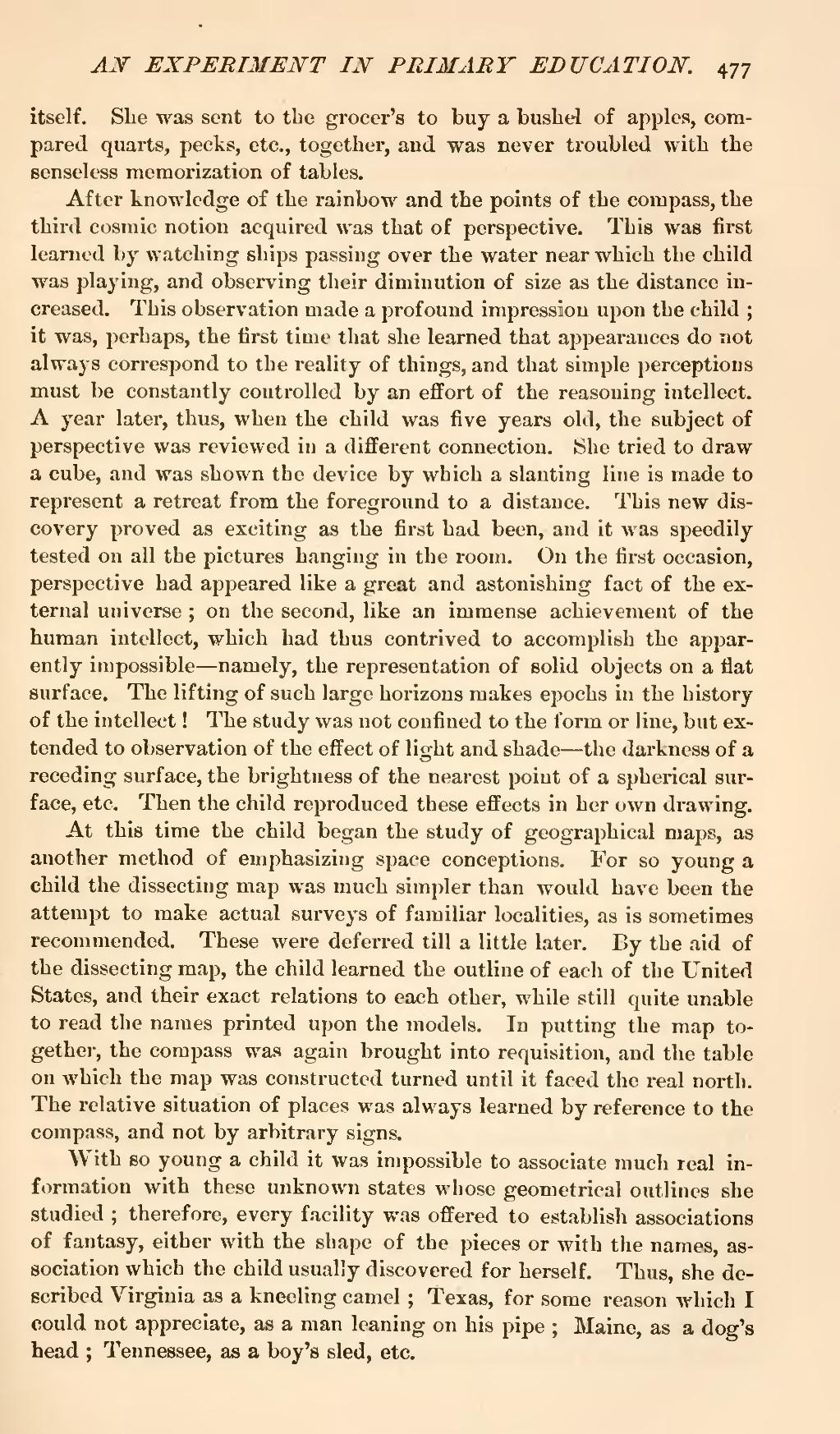itself. She was sent to the grocer's to buy a bushel of apples, compared quarts, pecks, etc., together, and was never troubled with the senseless memorization of tables.
After knowledge of the rainbow and the points of the compass, the third cosmic notion acquired was that of perspective. This was first learned by watching ships passing over the water near which the child was playing, and observing their diminution of size as the distance increased. This observation made a profound impression upon the child; it was, perhaps, the first time that she learned that appearances do not always correspond to the reality of things, and that simple perceptions must be constantly controlled by an effort of the reasoning intellect. A year later, thus, when the child was five years old, the subject of perspective was reviewed in a different connection. She tried to draw a cube, and was shown the device by which a slanting line is made to represent a retreat from the foreground to a distance. This new discovery proved as exciting as the first had been, and it was speedily tested on all the pictures hanging in the room. On the first occasion, perspective had appeared like a great and astonishing fact of the external universe; on the second, like an immense achievement of the human intellect, which had thus contrived to accomplish the apparently impossible—namely, the representation of solid objects on a flat surface. The lifting of such large horizons makes epochs in the history of the intellect! The study was not confined to the form or line, but extended to observation of the effect of light and shade—the darkness of a receding surface, the brightness of the nearest point of a spherical surface, etc. Then the child reproduced these effects in her own drawing.
At this time the child began the study of geographical maps, as another method of emphasizing space conceptions. For so young a child the dissecting map was much simpler than would have been the attempt to make actual surveys of familiar localities, as is sometimes recommended. These were deferred till a little later. By the aid of the dissecting map, the child learned the outline of each of the United States, and their exact relations to each other, while still quite unable to read the names printed upon the models. In putting the map together, the compass was again brought into requisition, and the table on which the map was constructed turned until it faced the real north. The relative situation of places was always learned by reference to the compass, and not by arbitrary signs.
With so young a child it was impossible to associate much real information with these unknown states whose geometrical outlines she studied; therefore, every facility was offered to establish associations of fantasy, either with the shape of the pieces or with the names, association which the child usually discovered for herself. Thus, she described Virginia as a kneeling camel; Texas, for some reason which I could not appreciate, as a man leaning on his pipe; Maine, as a dog's head; Tennessee, as a boy's sled, etc.
